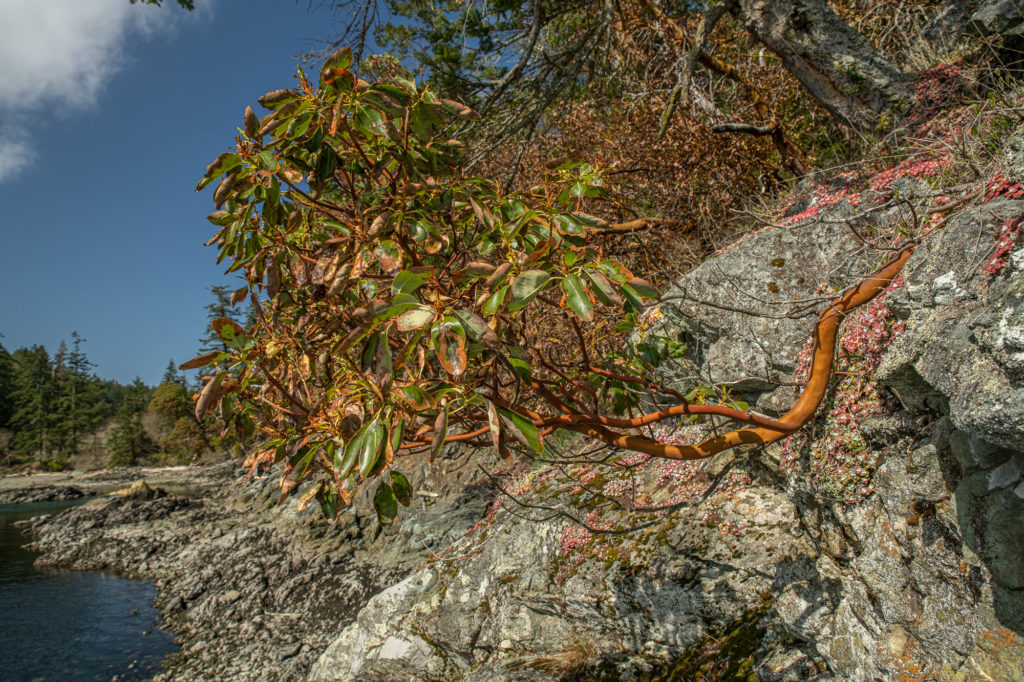
How do healthy forests reduce the risks of DROUGHT, FLOOD, FIRE and CLIMATE CHANGE and support the resilience of island communities?

WATERSHED HEALTH
With all of Salt Spring Island’s freshwater coming from rainfall, island communities must maintain the delicate freshwater balance of island watersheds. Trees act as natural sponges, helping to capture, store and filter rainfall into streams, rivers and aquifers. They also help cool the ground surface, keeping soils from over-heating and drying out.
Intact forests in particular play a key role in watershed health. Their multi-layered canopies act as a buffer, blocking wind to reduce loss of water to the atmosphere through evaporation. These forests store and filter water within their extensive root systems and larger woody debris (dead fallen and standing wood), which absorbs and holds moisture like a sponge. By retaining water in the watershed for longer and stabilizing seasonal groundwater levels, intact CDF forests play a pivotal role in reducing drought, flood and fire risk.
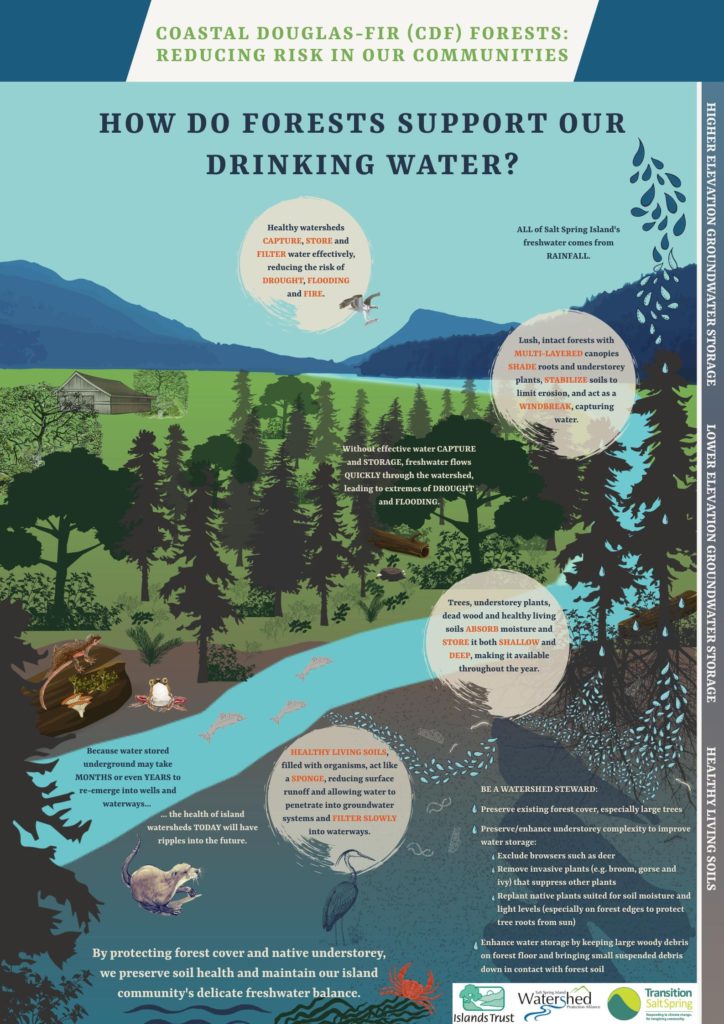
CARBON STEWARDSHIP
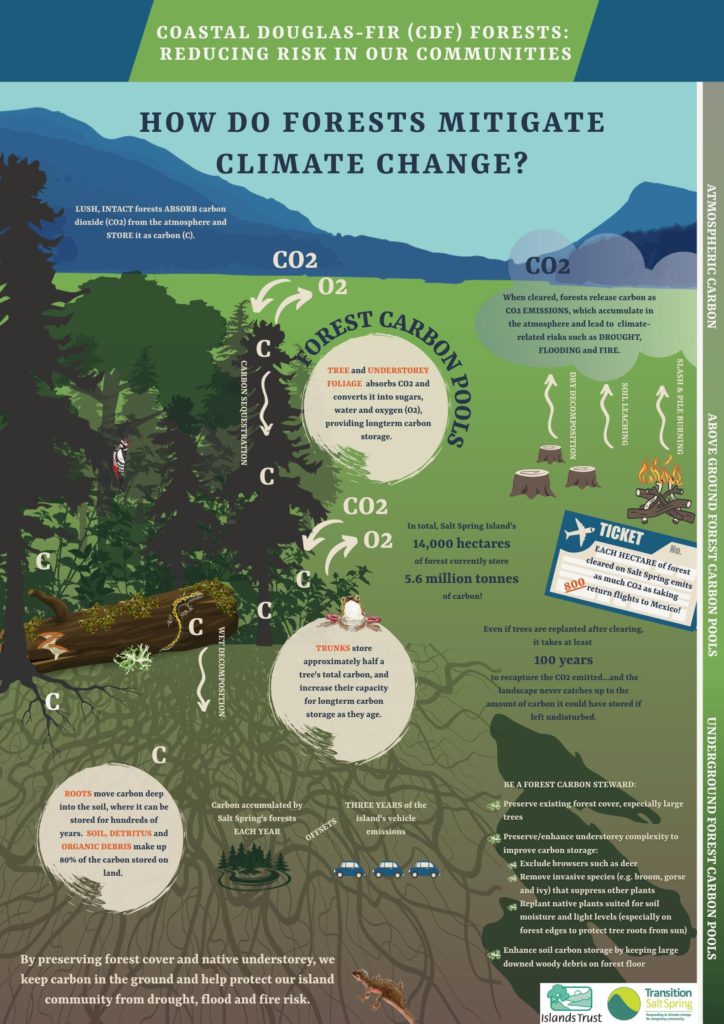
Through PHOTOSYNTHESIS, forests act as critical CARBON SINKS, absorbing and storing carbon and other greenhouse gases and providing us with oxygen. In this way, they mitigate the impacts of climate change, which include fire, drought and flood risk.
Forests store carbon in places in the forest referred to as CARBON POOLS – trunks/stems/bark, branches, foliage, shrubs, woody debris and other organic matter (detritus) on the forest floor, as well as soils and roots.
The longer a forest is left to mature, the greater the total amount of carbon it stores.
EACH HECTARE of Salt Spring forest stores approximately 250-400 tonnes of carbon and sequesters (absorbs) an additional 1-3 tonnes of carbon into carbon pools each year.
IN TOTAL, Salt Spring’s 14,000 hectares of forest store approximately 5.6 million tonnes of carbon and sequester 14,000-42,000 tonnes of carbon per year.

What happens when 1 hectare of forest is clearcut* on Salt Spring?
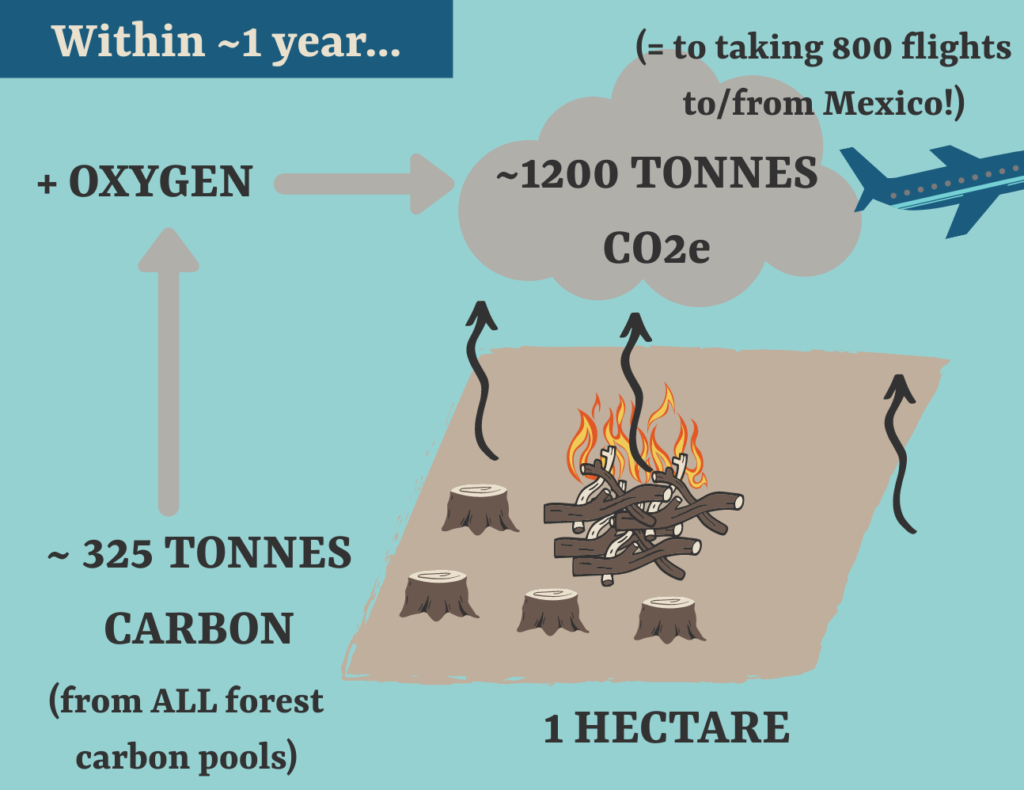
1. We immediately lose the carbon storage of ~325 tonnes of carbon, which, when it combines with oxygen, produces 1200 tonnes of carbon dioxide equivalent, or CO2e** – equivalent to taking 800 return flights to Mexico! This CO2 is emitted into the atmosphere through SLASHBURNING, SOIL LEACHING and DRY DECOMPOSITION.
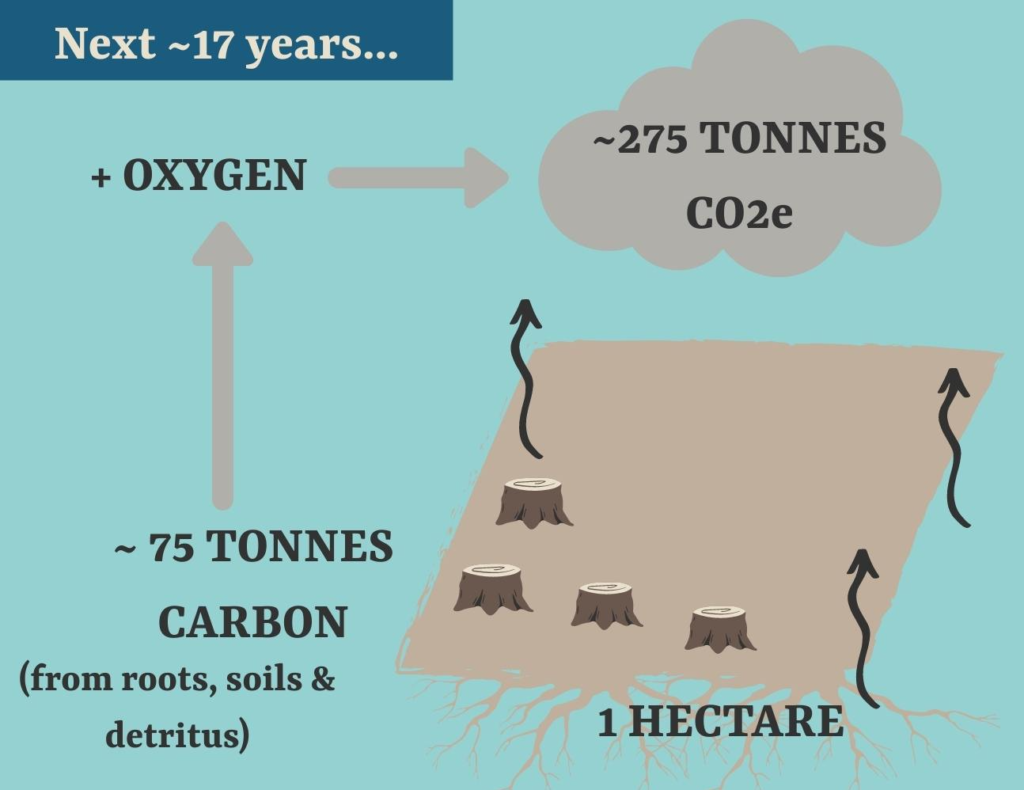
2. Over the next 17 years, an additional 75 tonnes of carbon, which
converts to 275 tonnes of CO2e, is emitted from the roots, soil and
detritus (now exposed), making the cleared land a net source of CO2
emissions.

3. There is one less hectare of carbon sink that could have been sequestering an additional 1-3 tonnes of carbon from the atmosphere each year.
*Clearcutting is defined by Natural Resources Canada as the taking of all trees in an area.
**CO2e is a unit used to compare CO2 with other greenhouse gas levels.
What about carbon stored in wood products?
While a portion of carbon from cleared forest may continue to be stored in long-lasting wood products, this is a small amount. More than half of the total carbon stored in forests is held in other parts of the forest than those harvested, such as soils, roots, and detritus. These carbon pools emit most of their carbon (whether through dry decomposition, soil leaching or slash burning) when the forest is cleared. Any carbon stored in wood products is also largely cancelled out by the emissions created to cut, transport and process the timber and products. And not all wood products are long-lasting. Much of this timber is converted into shorter-lasting products of waste, which quickly emit their carbon.
Areas that are left unforested will never store nor sequester carbon at the same capacity again. However, even those areas on Salt Spring that are reforested will need more than 100 years before they can regain the carbon that was emitted by the initial loss, if ever.
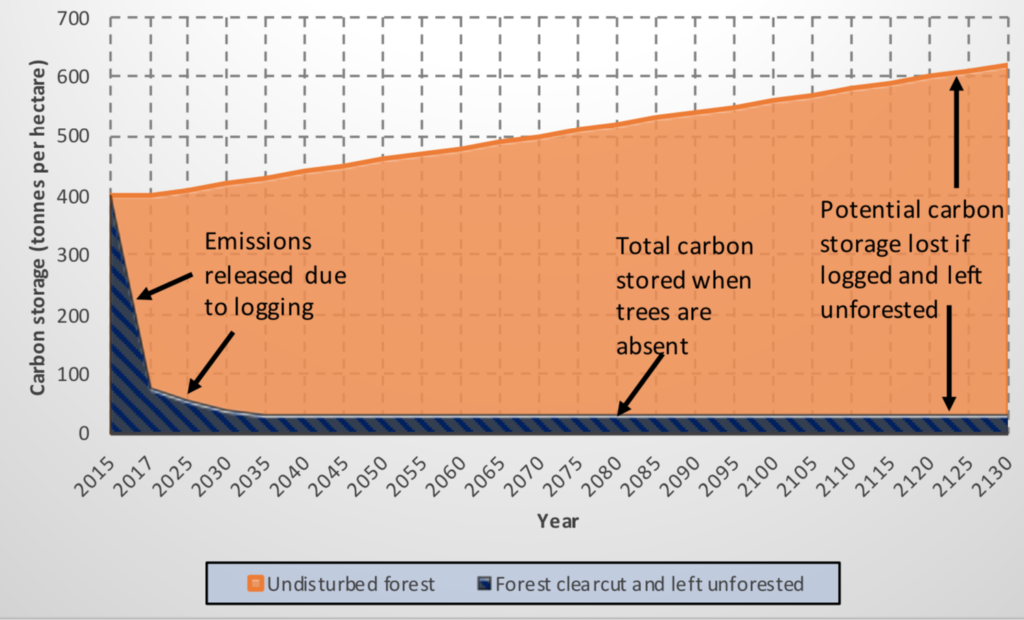
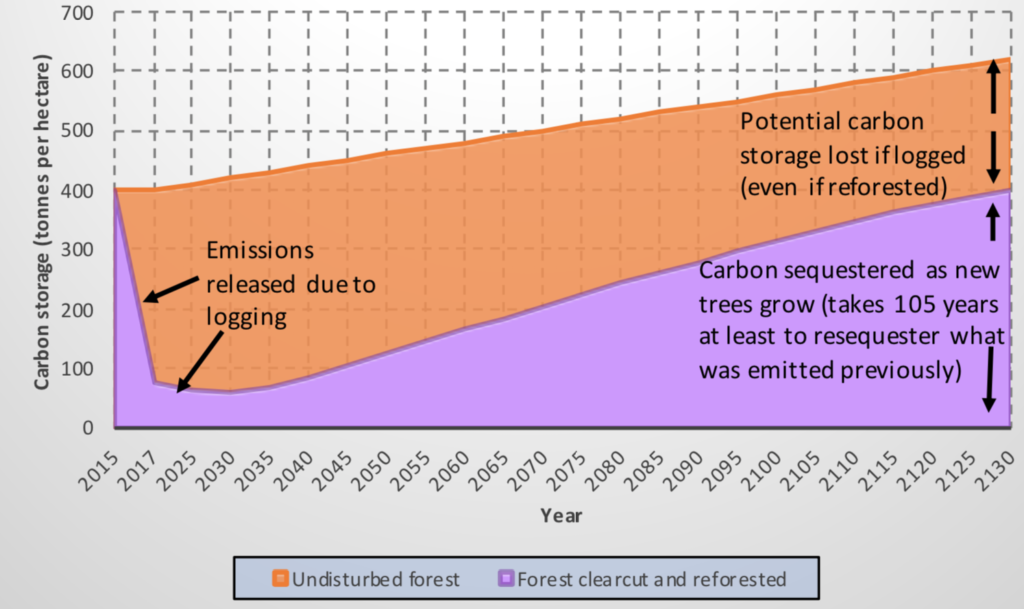

BIODIVERSITY
Salt Spring is home to a wide variety of ecosystems and habitats that are intricately interconnected with one another. Nutrients from the Salish Sea, carried onto shore by birds of prey, otters and other predators, feed the forests, which in turn maintain the balance of freshwater systems that sustain terrestrial ecosystems.
From the multi-layered canopies of differently aged trees to the healthy living soils beneath the forest floor, a healthy forest sustains a structural complexity that provides food and habitat for the species that call it home. In between, lush understories filled with berry bushes and other native plants, as well as standing or fallen woody debris provides important habitat to newts, salamanders, woodpeckers, bats, and many other types of wildlife.
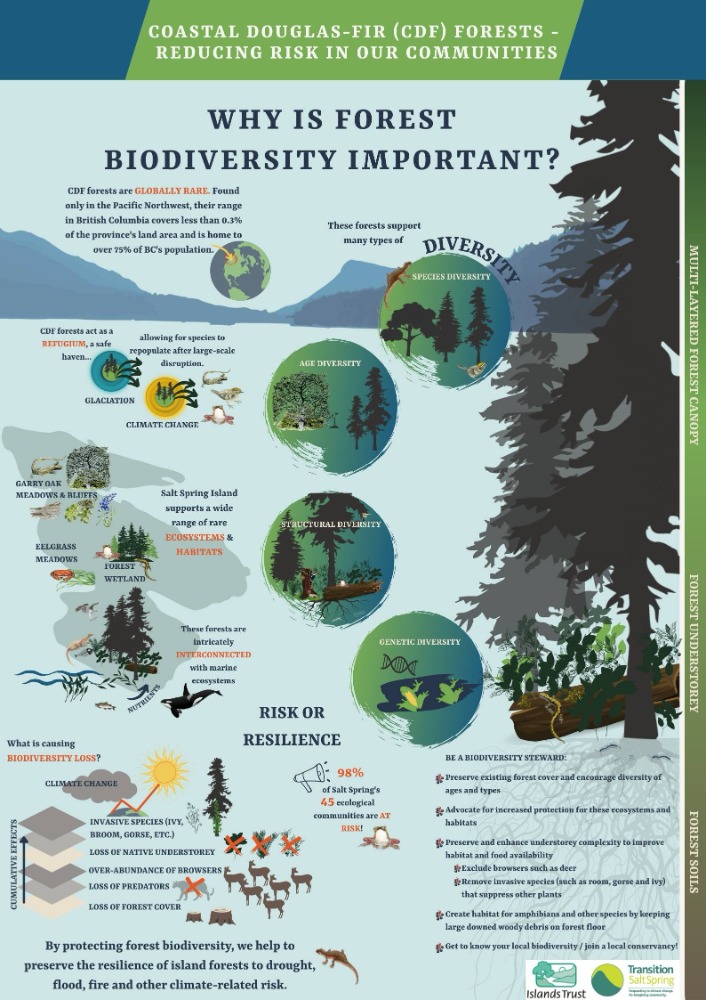
FIRE ECOLOGY
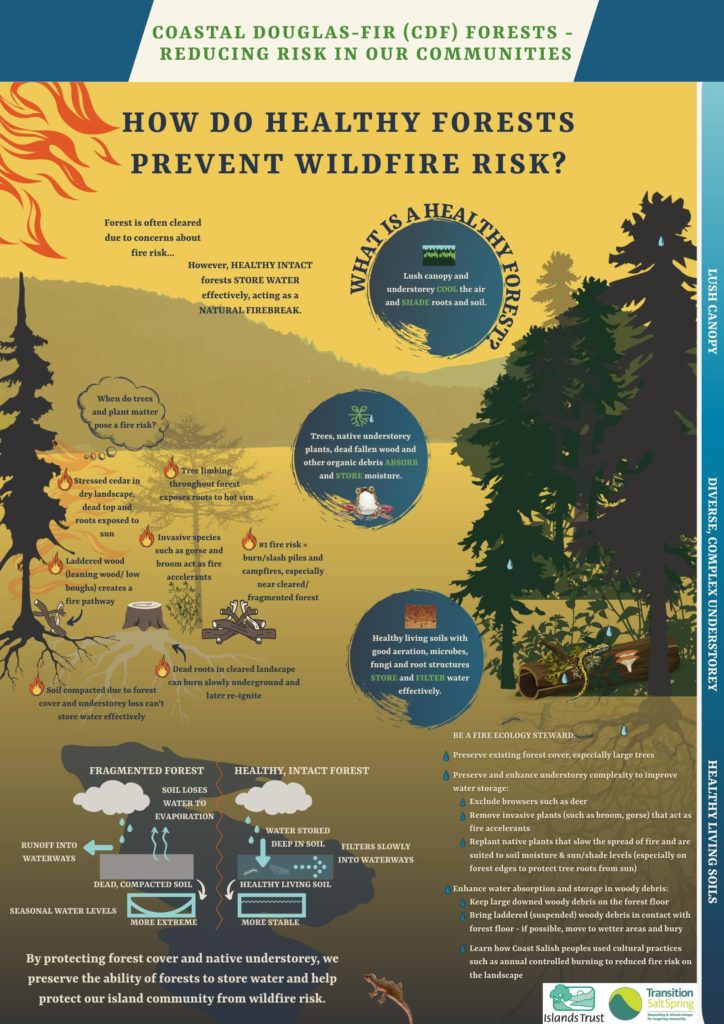
Though often considered a fire risk, healthy mature intact forests act as a natural firebreak.
The older the forest, the more large, woody debris is available on the forest floor, the greater the water storage capacity, and the greater the benefit to ground water, lakes and rivers. In a mature forest with nurse logs and well-developed soils, water is stored deep in the soil and forest floor during winter rains, acting as a reservoir that can be drawn upon in drier times of year. This means that healthy forests, particularly our local Coastal Douglas fir, are especially resistant to fire.
By contrast, when a forest is clearcut, water evaporates from these same soils, roots and dead wood, leaving behind a drier ecosystem that is more vulnerable to both drought and fire. The presence of large amounts of dried-up wood waste and the act of burning this dry woody debris increases the risk of fire. A mature forest is therefore at much lower risk of fire than a recently cleared forest that is losing water and contains slash piles / leftover wood waste, or even a younger forest with less capacity for water storage.
DID YOU KNOW? The thick bark of old Douglas fir trees makes it excellent at resisting fire. Many older Douglas fir trees will have fire scars from past fires that they survived.